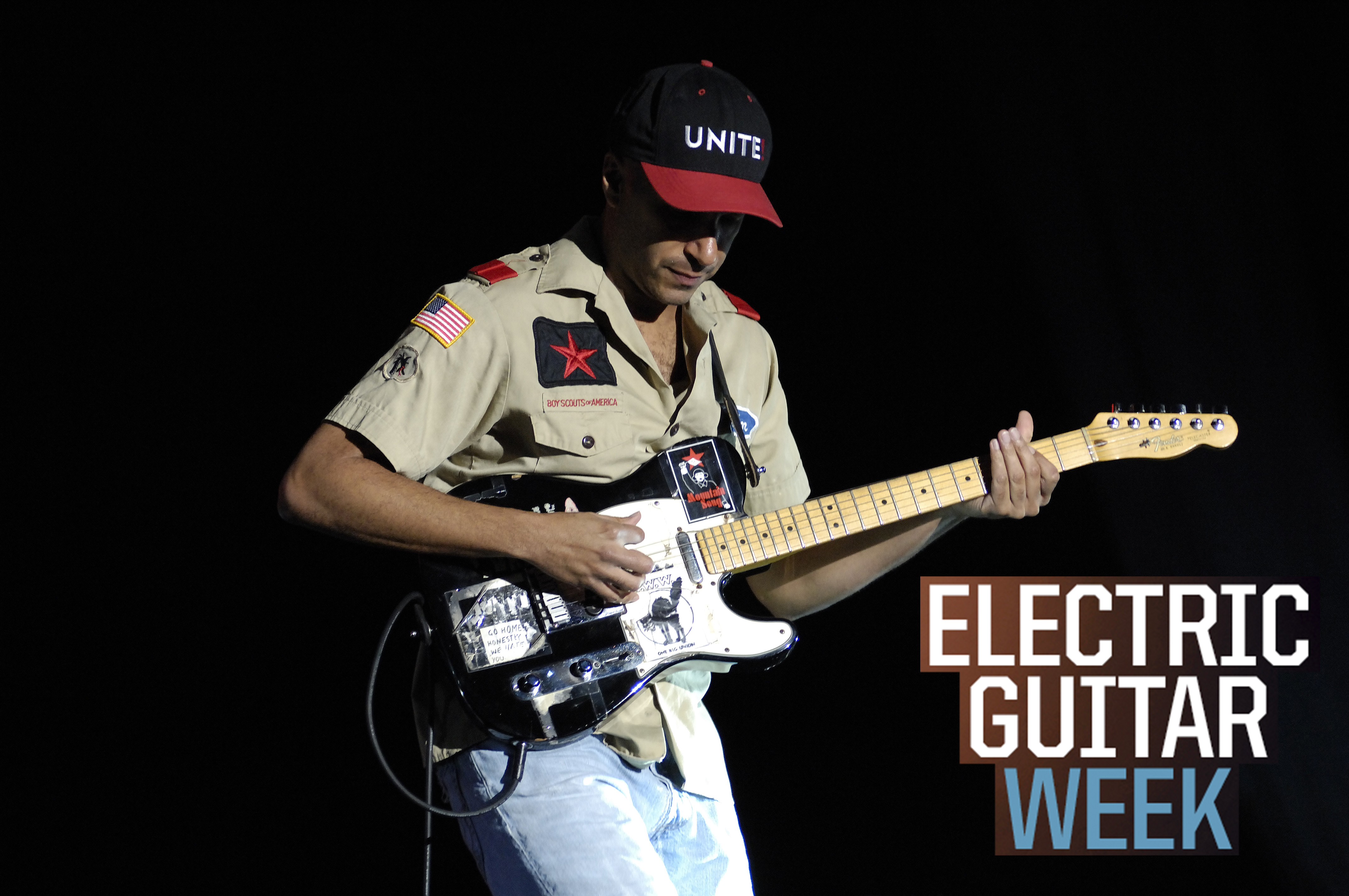How to write better guitar riffs
Bring your riffs to life with these fresh ideas

ELECTRIC GUITAR WEEK: If Jack White’s mega-hit with The White Stripes, Seven Nation Army, is anything to go by, the secret to a great electric guitar riff is simplicity and a singable melody.
There are many elements beyond these basics, however, so to help you on your quest to riffing greatness, we’re taking the elements of a rock riff and applying a few creative new ideas.
Electric Guitar Week is brought to you in association with Fender. Check out the Electric Guitar Week hub page for more tips and tutorials.

We’re beginning with an E minor pentatonic line using powerchords and chugging single notes - nothing wrong to start with, but we’re going to add a bit of life.
One way to do this is to create movement with the use of syncopation. Essentially, this means targeting the weaker notes in between the main pulse where your foot taps. Chromaticism - playing dissonant notes from outside the key signature - can also help by making the ‘consonant’ ones sound even better.
We’re also looking at rhythmic displacement, plus the use of chord tones and modes. Read on and all will be explained...
Basic hard rock riff
This basic E minor pentatonic riff is great for a hard rock and metal vibe, but introducing some space may fire you up with new ideas. So, before moving on to the next example, experiment by messing with the rhythm and timing and listen to what the effect is. Improvising with a riff you know can yield lots of creative ideas.
Want all the hottest music and gear news, reviews, deals, features and more, direct to your inbox? Sign up here.
Syncopation, chords and the blues scale
The two-bar sections here have their roots on the sixth and fifth strings, outlining both chords and hinting at the A blues scale. The character of the riff comes from several notes being placed on the offbeat - a musical device known as syncopation. The last three notes in bar 1 and the first two notes in bar 2 are prime examples.
Rhythmic displacement
We’re in prog-rock territory, but the principle can be applied in any style. Our riff repeats on either beat 1 (in bar 1) or on beat 4 (in bar 2). Starting on beat 4 throws the listener off balance, taking the riff in a different direction thanks to where the notes now fall compared to the kick and snare drums. We’re a long way from our first example!
Mixolydian mode and chord tones
Here we’ve given our riff a different flavour by using the E Mixolydian mode (E F# G# A B C# D). The major 3rd (G#) makes it sound more cheerful, but the b7th (D) sounds more bluesy. Crucially, these notes can be found in an E7 chord (E G# B D), so you get a sense of the chord when you play the riff.
Practice Plan
- One minute: Slowly play through an exercise, focusing on any tricky parts
- Two minutes: Slow down further and focus on tricky parts such as position shifts
- Two minutes: Gradually build up your playing speed
- Try out the other examples
Try out the tab exercises then see if you can move them to other areas of the fretboard. Bear in mind that all four riffs include open strings, so moving across to adjacent strings is a better place to start than moving up the fretboard one fret at a time.
Try omitting the open strings all together once you start transposing the riffs - there’s still lots to be learned and you can try inserting other notes in place of the open strings.
Finally, experiment with these different approaches in your next songwriting session to see where your new riff-writing skills take you.
Electric Guitar Week is brought to you in association with Fender. Check out the Electric Guitar Week hub page for more tips and tutorials.
Total Guitar is Europe's best-selling guitar magazine.
Every month we feature interviews with the biggest names and hottest new acts in guitar land, plus Guest Lessons from the stars.
Finally, our Rocked & Rated section is the place to go for reviews, round-ups and help setting up your guitars and gear.
Subscribe: http://bit.ly/totalguitar




